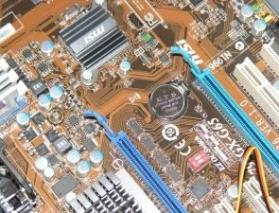 The relationship of mind to body has been a long and interesting topic of discussion in our culture. The positions range from the complete separation of the two, dualism, to the complete reduction of one into the other: materialism and idealism.
The relationship of mind to body has been a long and interesting topic of discussion in our culture. The positions range from the complete separation of the two, dualism, to the complete reduction of one into the other: materialism and idealism.
Recently, while listening to an old jazz classic, Coleman Hawkins’ Body and Soul, I had a little insight into this problem. I have owned Hawkins’ recording on vinyl, on a CD and now as an mp3. To my ear, the music is the same even as the medium has changed. The music is easily transformed from one kind of material to another. The specific material is not important to the music.
Music, it would seem, cannot be reduced to the material substrate it adheres on — vinyl, plastic, silicon, air — but it also cannot exist apart from some form of material substrate. Music is not a form of matter, but an organization that exists in some form of matter. On paper it is an organization of notes formed of ink, on a digital medium it is a particular organization of bits. When we remember music in our mind, it is apparently some organization of neurons.
This ability to be replicated from one medium to another is not unique to music. I could have used any written or pictorial work in the same way I have used music. Indeed, I could use any aspect of culture, for all culture has this characteristic of always requiring some material medium as storage, yet being independent of any particular form of media. (Original paintings, however, are different. They cannot be copied and still be original. But photos of such paintings can move easily from media to media.)
I would like to suggest that the relationship of our “soul” to our body is somewhat analogous to the relationship of music to a medium. (By “soul” I mean simply that which we experience internally.) Like music, soul can only exist as part of a material media, yet it is something more than that media. As with the distinction between hardware and software in computers, mind stuff is far more flexible than brain stuff. As an example, here I am transforming “mind-stuff” from a neural medium to the medium of digital print.
As subjective beings, we cannot simply be reduced to the matter that makes up our bodies, but we also cannot exist apart from it. If we want to call this materialism, we have to keep in mind that both the matter and the organization of the matter are required.
But of course, in talking about this “organized matter,” this software, I’m really talking about information. When we talk about information and matter we tend to act as if we are clear about what these words refer to, but here I’m trying to bring out some of the mysteriousness of information and the way that matter and information interact.
The subjective human self is the product of that interaction. I see no reason to believe this “self” is something other than an interaction of matter and information, but I also see no reason to think that the existence of matter, information and their interactions are anything but mysterious. It may be only a matter of taste, but I rather enjoy living within the mystery that I am even to myself.
* * * * * *
In an episode of the old television program The X-Files, a person figured out how to have her being translated from the protein medium of the body and brain, to a digital format. In this format, she could wander through the Internet as a disembodied piece of information, a kind of digital ghost in the machine. Perhaps, in principle, such a thing is possible, though I greatly doubt it.
The metaphor of body and soul being like hardware and software makes such a possibility seem tenable. Software, after all, is easily reproduced and sent over the Internet. I think for us humans, products of biological evolution that we are, the material and informational aspects of our self are far more intricately interwoven. And our individual journey through space and time, which is to say the long strange trip that is our life, registers both as information in our memories, but also in the transformations of our bodies. We may not always like those transformations, but they are integrally a part of what we are. A disembodied self, a self of pure information, would simply not be a human self.












